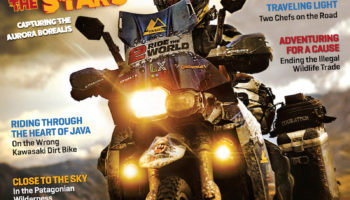“This article is published with the permission of RoadRUNNER Motorcycle Touring & Travel Magazine. It is not for sale or redistribution. RoadRUNNER is a bimonthly motorcycle touring magazine packed with exciting travel articles, splendid photography, maps and GPS files. Subscriptions are available online (www.roadrunner.travel), or by calling (866) 343-7623.”
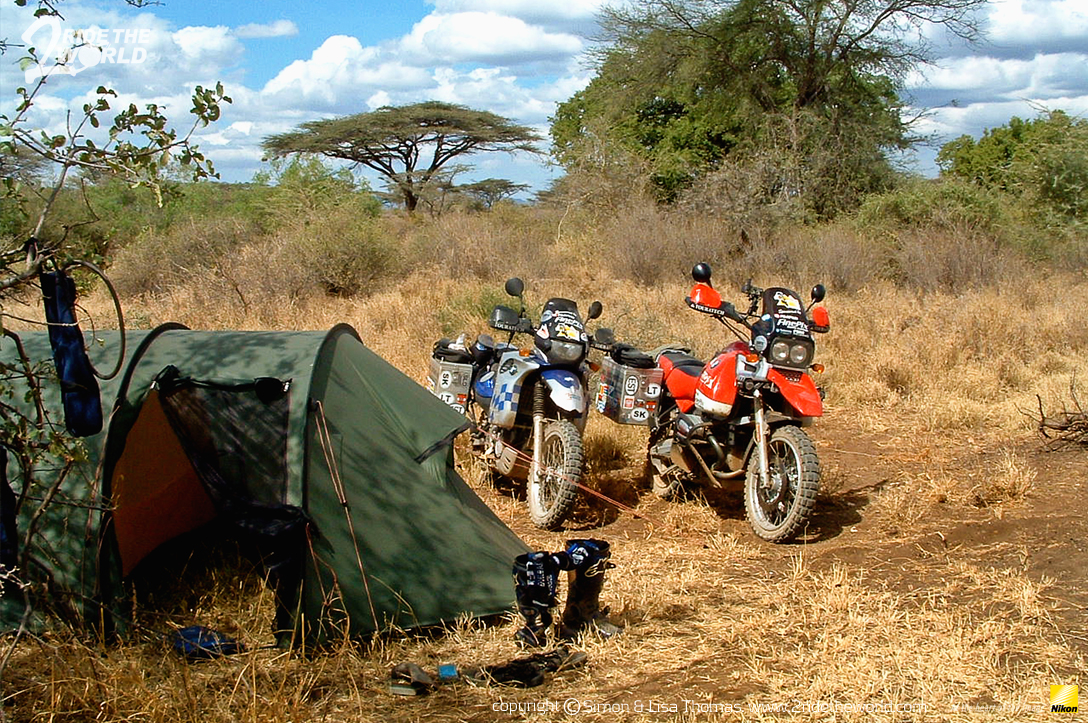
Rugged Beauty: The Swartberg
We shun the main N1, choosing instead the smaller roads, which lead us through the beautiful but arid Klein (little) Karoo and the Dutch-settled towns of Villiersdorp, Stormsvlei, Warmwatersberg and Ladismith. Just north of Oudtshoorn town our bikes kick up the dirt as we swap asphalt for a narrow, dry, loose dirt track that climbs and climbs. We are riding enduro style, up on the pegs, into one of the most spectacular passes in the world, the Swartberg, and across what was once considered impenetrable, the Swartberg Range. Our eyes flit from the winding track ahead and the awesome views. Cool, shaded kloofs (Afrikaans for ‘gorge’) provide sanctuary to delicate swaths of deep-green fynbos (fine bush) in this UNESCO recognized micro-climate.
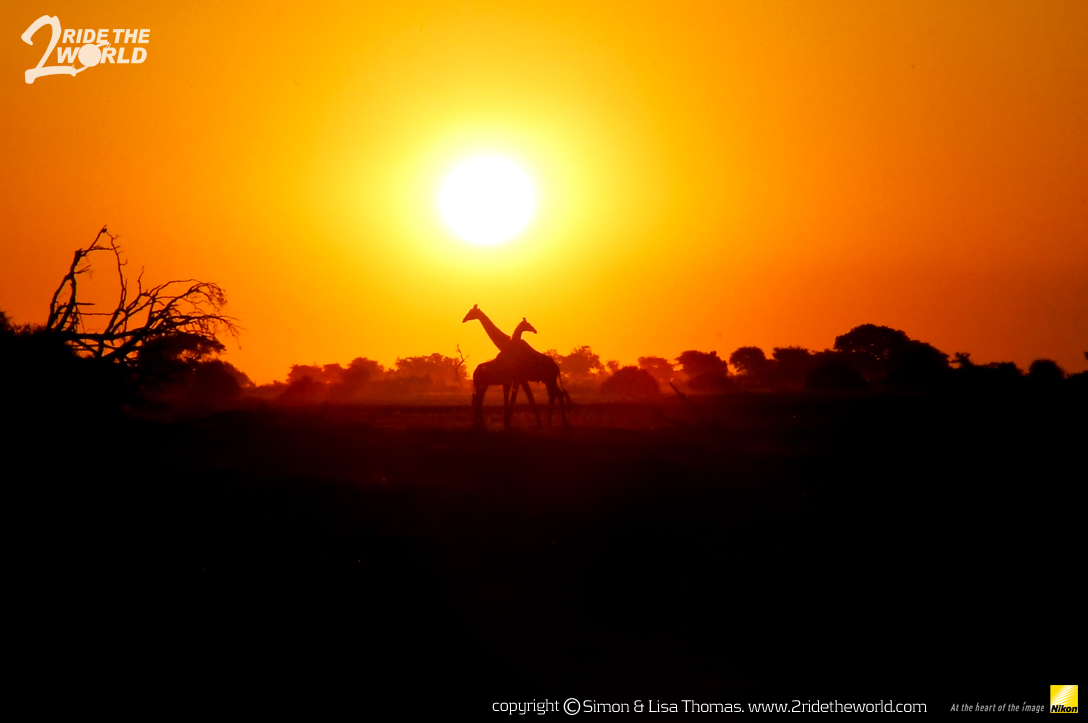
Small rocks tumble from above, loosened by the skittering hoofs of three klipspringers (small antelope) who, startled by our appearance, now miraculously scamper higher on the almost sheer rock face. We reach the summit (5,193ft.) and begin our cautious descent, the tight hairpins and sudden switchbacks stealing our attention away from the stunning images of the bright yellow and peach-colored proteas (South Africa’s national flower) that bedeck the higher ledges. Deep on the valley floor we ride in the shadows, our eyes adjusting to the gloom. The air is cool as we snake through the engulfment of a narrow Cape sandstone gorge. Past the close convolutions of the rock-face strata, Swartberg’s crimson peaks pierce the deep blue cloudless sky. Spat back out into the world, into the light and heat, we are but five miles from the small Karoo town of Prince Albert. Approaching the small border crossing from South Africa to Botswana.
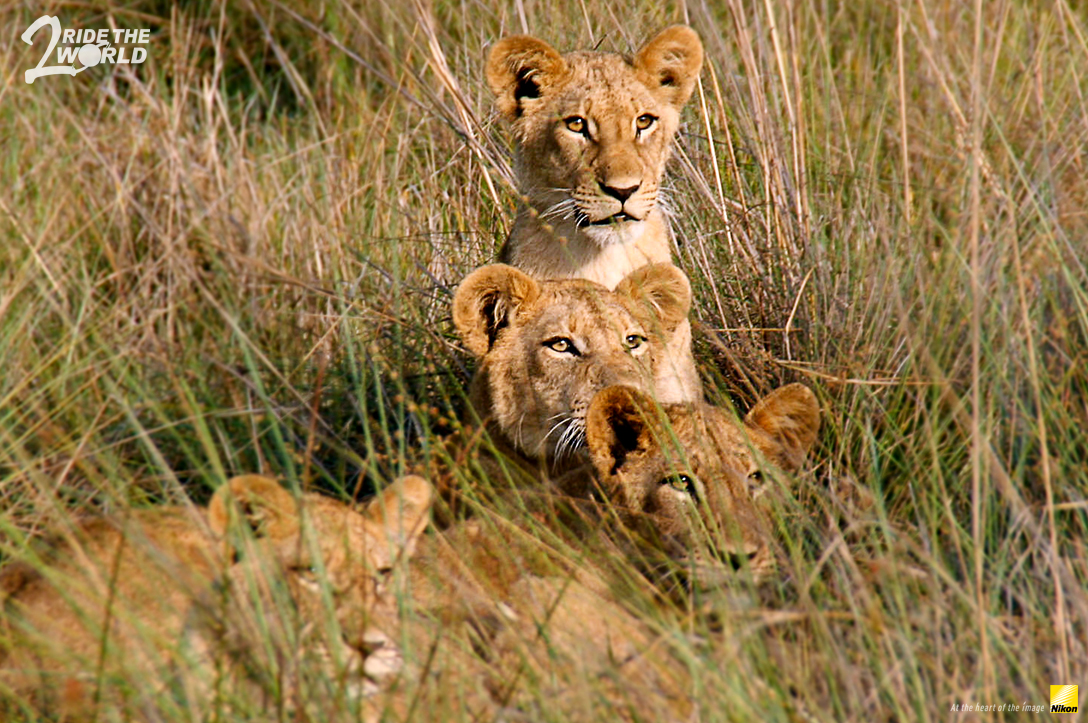
Camping with Lions
Africa in all its intoxicating glory has us hooked, and we are eager to experience more, hungry for our next fix. Once rested, we plan to ride north, relying on the trusty R1100GS and F650GS to see us through Botswana, Zambia, Tanzania, Kenya and Uganda, before returning to Cape Town via Mozambique and Malawi. Lisa and I consider the ride ahead while the lights of Cape Town turn on, glinting and twinkling in the shadow of Table Mountain. In the chill of the early morning we pull our riding jackets close around our necks. We are north of Gordon’s Bay. The rugged peaks of the Western Cape’s coast, known locally as the ‘Twelve Apostles’ are behind us, and we are riding the fast sweeping back roads that skirt the vineyards of Stellenbosch. The laden vines, heavy with dew, scent the air. It’s mid May, and we are bound for South Africa’s northeast region, where we’ll start our northward leg.
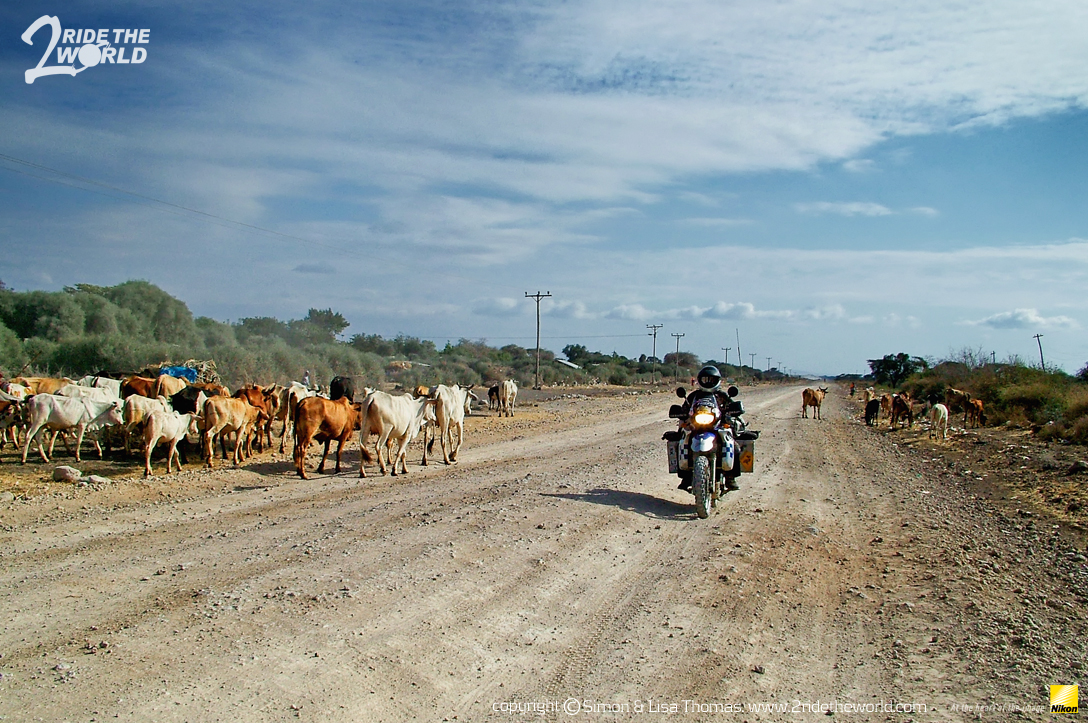
We are in Cape Town, South Africa, our bikes parked behind us. Bathed in the pink glow of the evening sun, our bodies weary and worn, we have ridden 24,000 miles through 11 African countries. We walk over the sand down to the water’s edge, where the cool green waves of the Atlantic lap against our bare feet. A moment to savor – feels so good to have the boots off. It has taken us nearly 8 months of demanding riding to traverse Africa’s west coast, and we are sporting our cuts, bruises and scars like badges of honor, commemorating each hard-fought mile.
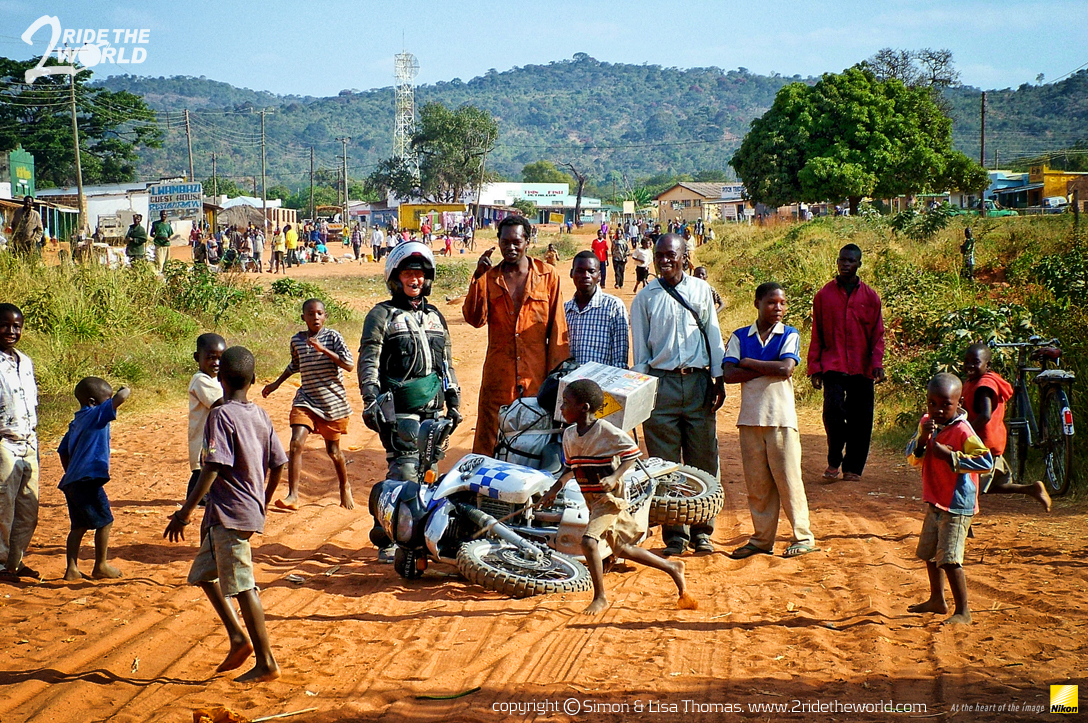
Today we are heading into the heart of the Okavango Delta. Surrounded by the parching Kalahari sands, the Okavango is the largest inland delta in the world, a labyrinth of lagoons, lakes and hidden channels spreading over 11,000 square miles – an oasis attracting thousands of species of wildlife, large and small. Thirty miles south of Kasane and just two miles from the Zambian border, we have passed countless signs emphatically warning: ‘DO NOT STOP!’ which we optimistically presume refers to the danger wildlife poses. However, it’s already 11am, and we haven’t seen any other creatures at all! But then, like clockwork, 50 feet ahead and unfazed by our presence, a huge, tusked bull elephant meanders across the trail and disappears into the bush.
The excitement caused by his sudden appearance keeps grins plastered on our faces throughout the day as we continue riding north. Two days later, at another campsite, we cautiously settle on the banks of the Chobe River, an African crossroads, where Botswana, Namibia, Zambia and Zimbabwe meet. In the silky still black water, crocodiles slowly veer in stealth mode, their scales barely breaking the water. To our left, 20 hippos munch ceaselessly, occasionally yawning to expose nature’s most deadly jaws. Hippopotami kill more humans each year than snakes, sharks and crocodiles put together. The sunset, a deep orange, colors the riverbank a soft mauve, and in the distance giraffes amble in silhouette. At the base of an ancient tree, pressed back under its exposed roots, two young lion cubs devour a freshly killed kudu (a woodland antelope), their engorged stomachs round and tight as drums. They roll and play with the mauled flesh and saunter down to the water to drink. These moments will stay with us always.
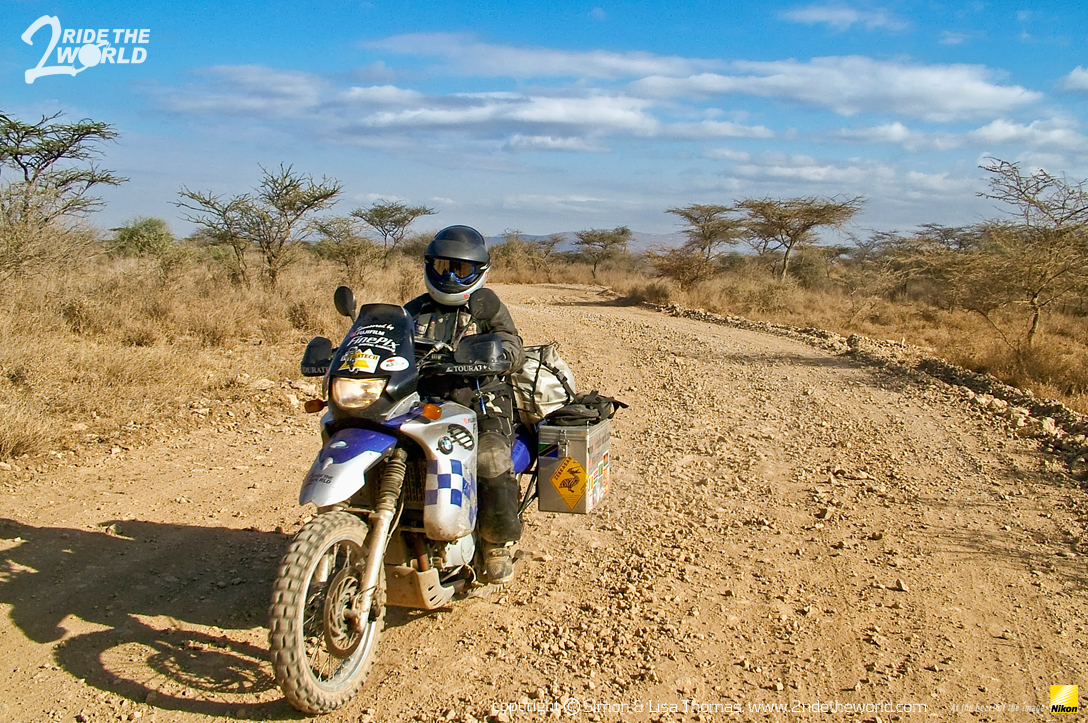
Dusk, we are now 1,200 miles northeast of the Swartberg Range and 200 miles northwest of Pretoria. The landscape becomes savannah as we draw closer to Botswana, a land-locked country in which the great Kalahari Desert takes up 70 percent of the space. We pull up beside a makeshift shed and, kneeling, read the hand-written notice, “Immigration,” on a grubby scrap of cardboard hanging above the low window. After disclosing that our bikes are foreign registered, we are surprised to then be asked to pay 180 Pula ($26) for the road license, and grow more than a little nervous when warned of bandits on the outskirts of the capital, Gaborone. Leaning forward, the immigration officer earnestly admonishes us to “ride with caution!”
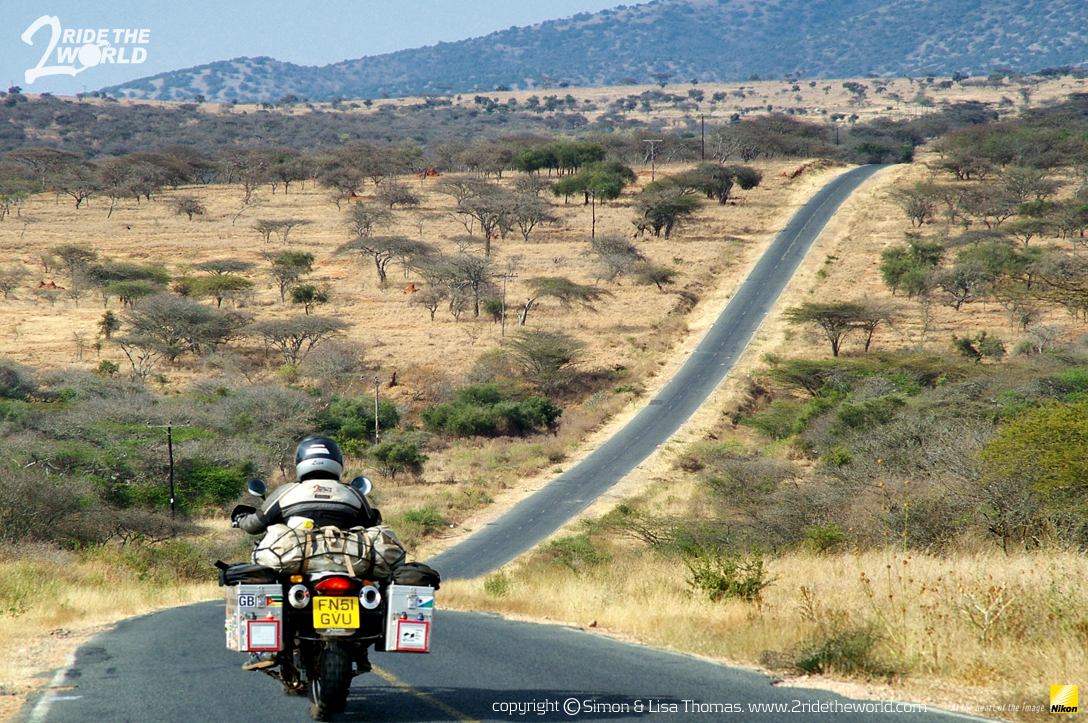
Botswana
With those words still ringing in our ears, we ride into the capital in the dark and check in at the Lion Hotel. The dim lights of our worn room flicker and crackle as we check the day’s digital photos. The tiny space, only $8 for the night, is a bargain, and at least the bikes are safe – we’ve driven them inside! They make for a cozy fit, an interesting sight, with them barely squeezing through the door, the cylinder heads of the 1100 crammed between the bed and the wall, and their engines still ticking off heat. Escaping Gaborone’s congested modern streets early, we stop 100 miles north to sip warm water from our drinkbottles, pausing at the Tropic of Capricorn at S23 30.003 E26 36.764. Once one of the most impoverished countries in Africa, Botswana has flourished since gaining its independence in 1966, and it’s now making the most of the immense mineral wealth beneath its sandy soils. The country’s stability and affluence is proudly reflected in the freshly laid black asphalt we now ride. We make camp to the east of the Ntwetwe Pan, a vast salt pan teaming with wildlife. Now, it’s semi-submerged, the normally navigable tracks swamped after unusually heavy rains. Our ‘Nata Lodge’ camp glows in the flickering orange light of the fire cooking our evening meal as tiny, painted reed frogs and barking geckos serenade us.
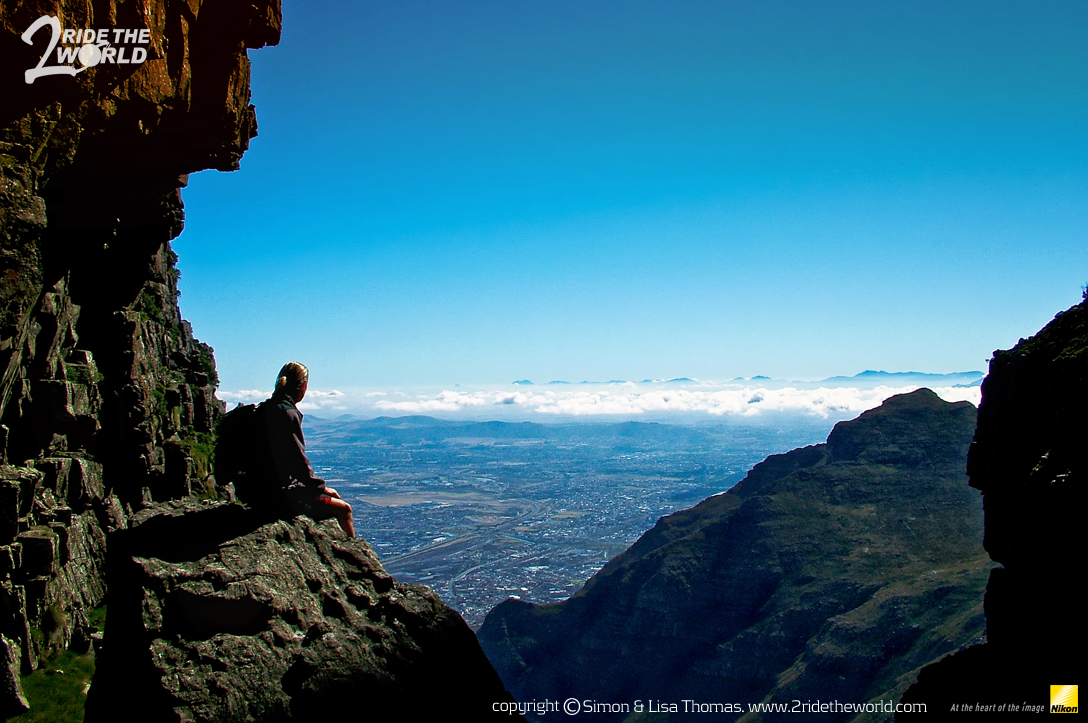
Z is for Zambia
In the heat of the day, we collect our exit stamps out of Botswana, ride past the queue of cars for the ferry, and 20 minutes later we make our way up onto the pontoon’s rickety planks. Shortly afterwards, we are in Zambia, country 31.
On the northern shore of the mighty Chobe, the bikes roar as we climb the steep embankment, the wheels of our bikes spin momentarily, slipping on the thick algae covering the ramp from the water. An old rusted shipping container serves as the Zambian immigration office. Lisa and I are all too aware of their heads, smile warmly as we pass. We stop briefly for photos at the celebrated Victoria Falls, and we are soon soaked to the skin and refreshed by the plumes of atomized spray the millions of gallons of water cascading hundreds of feet each minute produce when smashing into the rocks below.
Across the Victoria Falls Bridge we can see Zimbabwe, but, unfortunately, due to their ongoing fuel crisis, we can’t detour to explore this troubled country. Our next pit stop is in Lusaka, the capital of Zambia, to pick up our Tanzanian visas. The sights and smells on the northern side of town remind us of Mali, where squalor and dirt are the norm, filled with families eking out an existence any way they can. We continue along on “The Great North Road,” which rises, seemingly endlessly, before us – the way to Kenya. On the outskirts of Mkwamba and keenly aware that we are dangerously close to the border of the Republic of Congo, a short quartermile to our west, we pay extra attention to the GPS to ensure that we don‘t wander any closer.
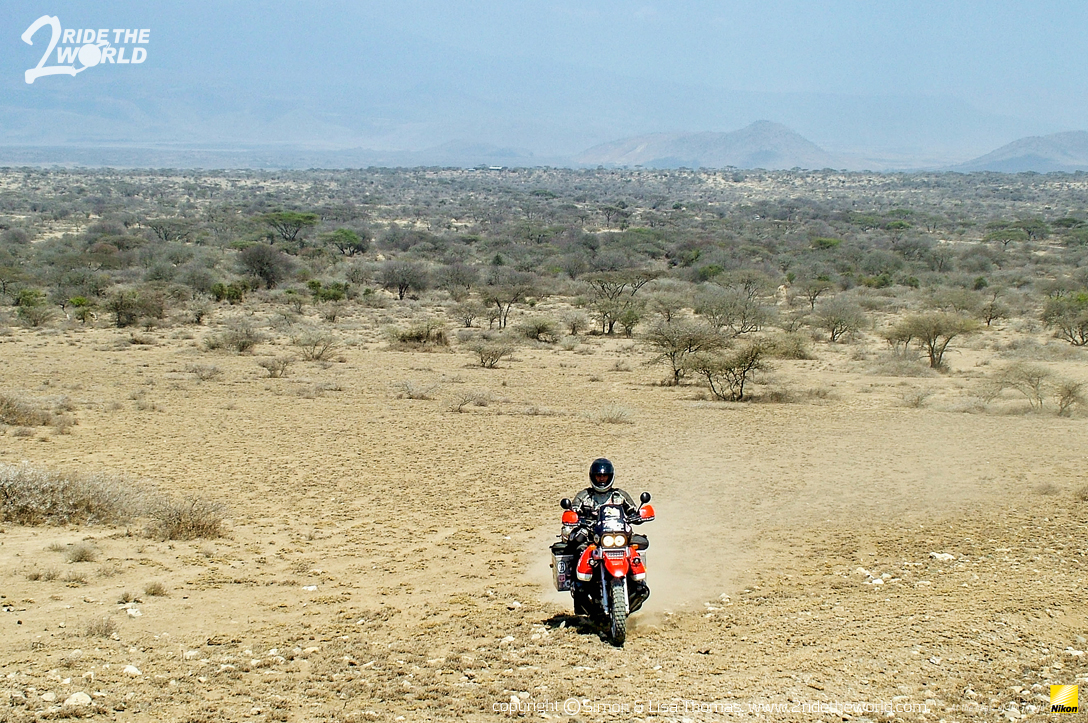
Africa’s reputation for outright bribery and corruption in these matters, and we are prepared for a lengthy stop. But this time, exiting only 40 minutes later with our documents stamped, we’ve cleared customs without any ‘financial lubrication’ greasing palms. Outside, the warmth and hospitality with which we are received is overwhelming. Barefoot children with huge smiles cheer and wave, running excitedly after our bikes. Along the roadside brightly dressed Zambian women, with impossible loads balanced ontheir heads, smile warmly as we pass. We stop briefly for photos at the celebrated Victoria Falls, and we are soon soaked to the skin and refreshed by the plumes of atomized spray the millions of gallons of water cascading hundreds of feet each minute produce when smashing into the rocks below. Across the Victoria Falls Bridge we can see Zimbabwe, but, unfortunately, due to their ongoing fuel crisis, we can’t detour to explore this troubled country. Our next pit stop is in Lusaka, the capital of Zambia, to pick up our Tanzanian visas. The sights and smells on the northern side of town remind us of Mali, where squalor and dirt are the norm, filled with families eking out an existence any way they can. We continue along on “The Great North Road,” which rises, seemingly endlessly, before us – the way to Kenya.
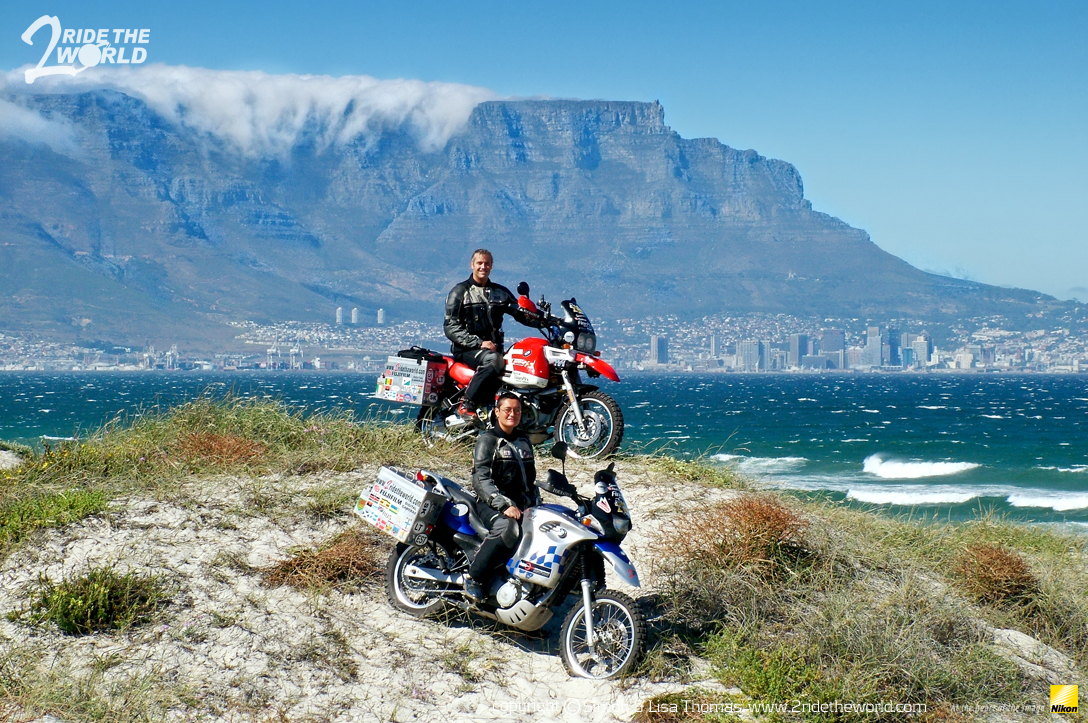
On the outskirts of Mkwamba and keenly aware that we are dangerously close to the border of the Republic of Congo, a short quartermile to our west, we pay extra attention to the GPS to ensure that we don‘t wander any closer. Farther northwest we turn from the patchy asphalt of the Great North Road (T2) onto a sandy track lined with hardy wide-leafed trees and the spiked foliage of the stout acacia. The bikes squirm in a familiar fashion in the soft orange sand. Down to our left, the Lake of the Royal Crocodile shimmers pinkly in the fading light, hemmed in by the soft, rolling, western hills. Our camp on the manicured grass of Kapishya Hot Springs justifies the 25-mile detour in sand.
This was once the private estate of Lt. Colonel Stewart Gore-Browne, an eccentric Englishman who erected a brick mansion here in the 1900s. He paid the local tribesmen to cut a track and carry in by hand his beloved grand piano. For so long in ruins, Browne’s folly is now being lovingly restored by his great grandchildren. Deep thermal fissures heat the estate’s bubbling emerald pool, wide leaves brush the water, the dense, dark foliage of surrounding jungle shimmers. Shaded from the sun’s intense heat, we soak for hours, easing away the previous day’s ride of 520 miles. At the T2 we pull over to re-inflate our tires to road pressure, instantly attracting an audience of children, all of them excited and curious about the bikes and the Martians riding them. Answering each of their questions, we are finally allowed to take a few photos. The big smiles come easily, in stark contrast to the lives these kids lead.
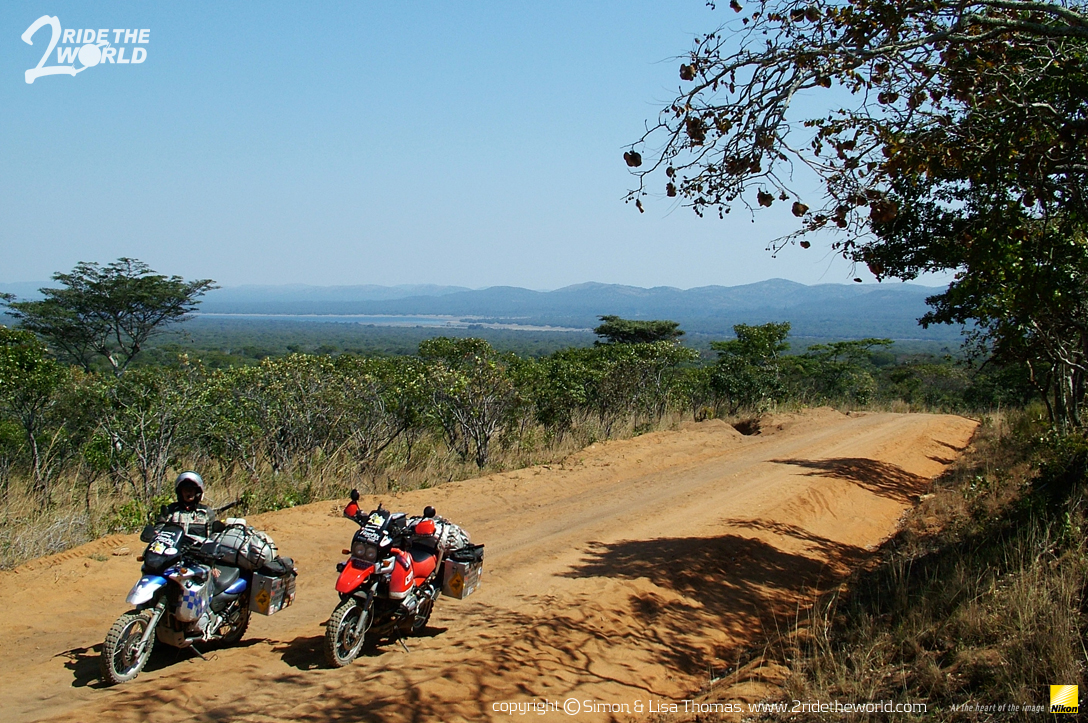
Among the Massai
It’s mid June and though we enter Tanzania without fuss, we’re baking in the arid air. Dry, gnarled acacia blanket the land; their needle-like thorns ready to puncture tires that stray. Above the clouds, the turquoise ice cap of Mount Kilimanjaro can be seen. Closely skirting its rugged, southerly flanks, we pass, giving up the asphalt for gravel that leads us to the outskirts of a Massai village. A large, ringed stockade made of thorned acacia branches surrounds the dung-and-straw huts, and the smaller ring inside that one safeguards their precious livestock at night. Swathed in bright red and holding long spears, tall, elegant Massai men gather around the bikes. Seven stunning Massai women dressed in cobalt blue whisper and giggle in the background.
Having received permission to camp inside the protection of the village, we join Ayuna in his hut for dinner. A clay pot is filled with what looks like milky porridge, simmering above a small fire pit. As we share our food, Ayuna describes the traditional male rites of passage. At the age of 15, the boys from the village each armed only with a spear and a knife are sent out as a group into the bush. Together they must stalk and slay a lion before they can return. The pelt is then hung in the village, as a trophy of bravery. Flashing a proud smile, Ayuna points to his lion’s skin, draped across his doorway, and holds up for inspection the smooth yellow lion’s tooth that hangs from his neck.
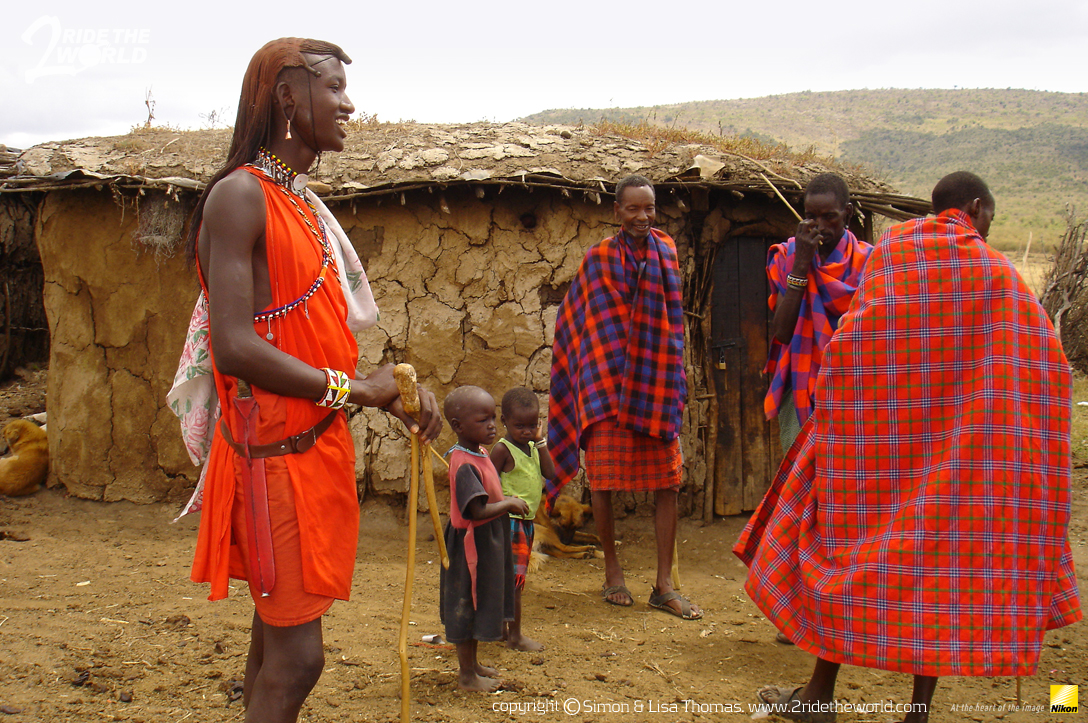
On the outskirts of Dar es Salaam, the Arabian sway of life is abundantly clear, with the minarets of its many mosques punctuating the skyline. And the number of suicidal coach drivers passing us on blind bends and steep hills increases alarmingly. Directions asked and received, we head for Silver Sands, a campsite right on the beach and a favorite stopover with the truck drivers we met en route. We’d passed dozens of these heavyduty cargo trucks, each kitted out with windows and seats carrying adventure-seeking tourists for days or weeks through Africa. Banana and palm trees line the path to the beach, and we can smell the salt in the air and feel the swampy embrace of coastal humidity. Large iron gates swing aside and we ride onto the beach. “Karibu, Karibu, welcome, welcome,” the young gate porter says, smiling broadly.
A half hour later the tent is up and beers are in hand as we watch the sun ‘cock a snoop’ to the African continent. Sitting outside our tent, the tumbling rhythm of the waves on the beach be calming, we realize that Africa is everything we’d dreamt of and more. We’ve found the best in human nature, where the most impoverished of people, those seemingly possessing next to nothing, readily and graciously offer to share half of what they don’t have without any expectations of return. The warmth and resilience of the people we’ve met travelling this continent have left their marks. And we are both humbled and all the richer for it. The buzz of Dar es Salaam whirls about in the gentle breeze, and as we consider our journeys the distant lights of Zanzibar sparkle to life.
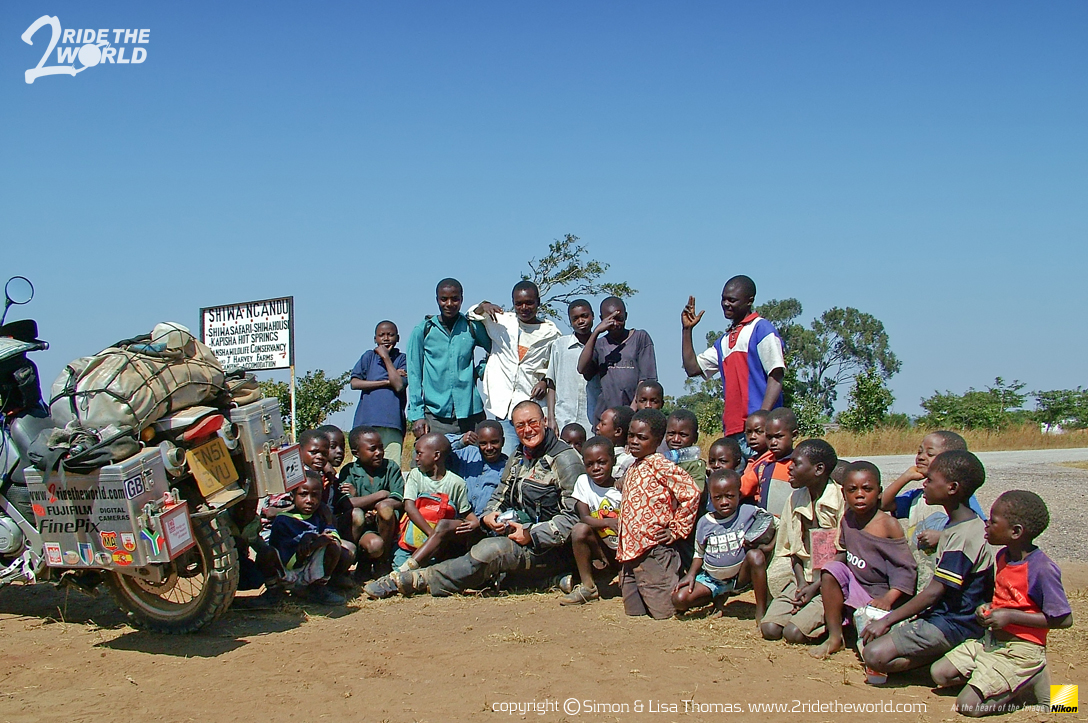
In General
Total Mileage: Approximately 3,845 miles.
African nations are often only known for their violence, power struggles and corrupt governments, military and police. However, there is a more positive side to South Africa and its neighbors to the northeast. There is genuine human warmth experienced daily, and for the most part you could easily be forgiven for thinking you are in a scene from a National Geographic documentary.
Generally there are two rainy seasons, the long rains from March to May, and the short rains from October to December, with temperatures between 80-85 F. During this time it can become exceptionally hot, and rain may make some roads muddy and impassable. The high season is from December to March and from June to August, but most tourists go in January and February, when the weather is hot and dry.
East Africa presents many choices in accommodations, from first-class hotels to camping grounds. Wild camping is possible outside the major towns and cities. Always scout the area first before putting up your tent, as you may be in the middle of an animal track or route between villages.
Stay tuned for more stories from Simon and Lisa’s motorcycle journey around the world!
Click HERE to learn more about 2RideTheWorld.
